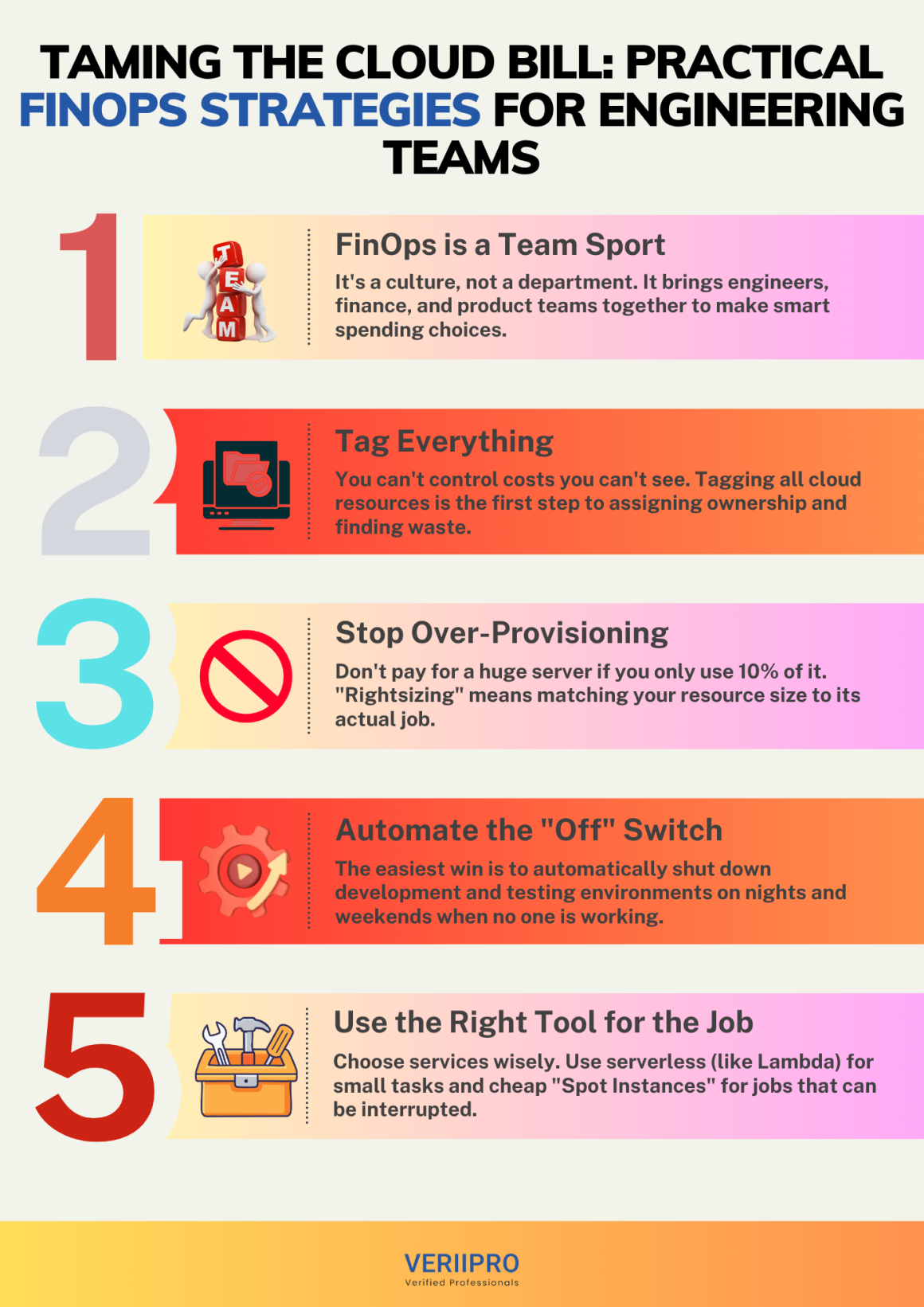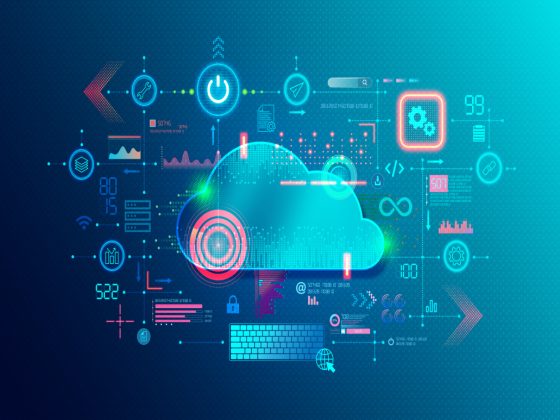Taming the Cloud Bill: Practical FinOps Strategies for Engineering Teams
We’ve all seen it. The project is a success, the app is scaling, and then the cloud bill arrives. The “sticker shock” from a massive, unexpected AWS or Azure invoice has become a painful rite of passage for growing companies. The cloud promised a “pay-for-what-you-use” paradise, but it turns out it’s incredibly easy to use (and pay for) far more than you actually need.
This is where the traditional wall between engineering and finance crumbles. For decades, engineers were told to build for performance and reliability, while finance was left to figure out the bill. This model is broken. The result is massive waste-a 2023 report from Flexera estimated that organizations waste about 28% of their cloud spend.
This problem has given rise to a new discipline: FinOps, or Cloud Financial Operations. And contrary to its name, it’s not just a job for the finance team. FinOps is a cultural practice that brings engineers, finance, and product managers together to manage cloud costs. For engineers, this isn’t a distraction-it’s the next evolution of our craft.

FinOps: Why Engineers Are at the Steering Wheel
The FinOps Foundation defines it as a practice that builds accountability for cloud usage and variable spend. Think of it like Agile for cloud costs. It’s a continuous loop of informing (visibility), optimizing (taking action), and operating (automation).
Why should you, as an engineer, care? Because you are the only one who can truly control the costs. You are the one provisioning the servers, choosing the database type, and writing the code that spins up resources. Finance can’t see why a service is running; they can only see the bill. When engineers embrace FinOps, they don’t just save money-they build more efficient, elegant, and valuable systems.
This isn’t about being cheap. It’s about efficiency. It’s about maximizing the business value of every dollar spent on the cloud. Here are the practical strategies you and your team can implement today.
Strategy 1: The First Commandment: Tag Everything
You cannot optimize what you cannot see. This is the low-hanging fruit and the absolute bedrock of any FinOps practice. Tagging is the process of attaching metadata (like project: "new-feature", team: "backend", or owner: "jane.doe") to every single resource you launch.
This isn’t bureaucracy; it’s essential for visibility. Without tags, your monthly bill is just one giant, terrifying number. With tags, you can use your cloud provider’s cost tools (like AWS Cost Explorer or Azure Cost Management) to filter and see exactly which project, team, or feature is responsible for which costs.
This immediately sparks accountability. When the backend team sees their new microservice is costing $5,000 a month, they are intrinsically motivated to find out why. Without tagging, everyone points fingers, and nothing gets fixed.
Strategy 2: Stop Guessing: The Art of Rightsizing
Engineers love headroom. We’re trained to plan for peak traffic, so we launch a massive server “just in case.” The problem is that the “just in case” peak might only last 10 minutes a day, but you’re paying for that oversized server 24/7.
Rightsizing is the process of matching your resources to their actual workload.
Use your provider’s monitoring tools (like Amazon CloudWatch or Azure Monitor) to look at the actual CPU and memory utilization of your servers and databases over a two-week period. Is that giant database server consistently running at 10% CPU? Downsize it. You can often cut the cost of that resource in half (or more) with zero impact on performance. This is a continuous process, not a one-time fix.
Strategy 3: Automate the “Off” Switch
This is the easiest win on this list. Think about your company’s development, staging, and QA environments. Do they really need to be running at 3:00 AM on a Sunday? Absolutely not. Yet, most companies leave their non-production environments running 24/7, effectively burning money for no reason.
This is a perfect job for automation. Write simple scripts or use built-in cloud schedulers to automatically shut down all non-production resources every weekday at 7:00 PM and turn them back on at 7:00 AM. Do the same for the entire weekend. This simple change can cut your non-production environment costs by 50-70% immediately.
Strategy 4: Choose the Right Tool for the Job (It’s Not Always a VM)
We often default to what we know, which is usually a virtual machine (like an EC2 instance). But the cloud offers a massive menu of services, and choosing the right one has a huge impact on cost.
- Serverless (AWS Lambda, Azure Functions): Is this a small piece of code that only runs when a user uploads a file? Don’t use a 24/7 server; use a serverless function. You will pay only for the few milliseconds it runs, which is often fractions of a cent.
- Spot Instances: Do you have a big batch processing job (like video rendering or data analysis) that can be interrupted? Don’t use a standard, expensive “on-demand” server. Use Spot Instances. These are unused servers that cloud providers sell for up to a 90% discount, with the catch that they can be reclaimed with a two-minute warning.
- Reserved Instances (RIs) & Savings Plans: Do you have a production database that you know will be running for the next year? Don’t pay the high on-demand price. Commit to a 1- or 3-year Reserved Instance or Savings Plan to get a massive discount (often 30-60%) in exchange for that commitment. This guide from Google Cloud breaks down the different models well.
By thinking like an architect, not just a coder, you can build systems that are not only powerful but also incredibly cost-efficient. FinOps transforms engineers from simple builders into strategic partners who drive business value and profitability.
Looking Forward
Looking for opportunities in Cloud Engineering and FinOps? VeriiPro is here to help! As companies increasingly rely on the cloud, they are desperately seeking engineers who understand cost, efficiency, and scale. VeriiPro specializes in connecting talented cloud and DevOps professionals with innovative companies that value financial accountability. With our deep industry knowledge and extensive network, we provide the resources to help you find a role where you can build, optimize, and lead the future of cloud infrastructure.









